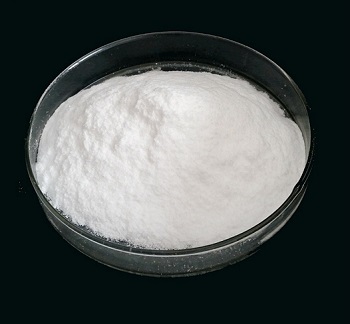Overview[1]
P-aminophenylarsonic acid, commonly known as “asanic acid”, can be obtained as needle-shaped crystals from water. It is soluble in hot water and sodium carbonate aqueous solution, slightly soluble in cold water, ethanol and acetic acid, and insoluble in acetone, benzene, chloroform and ether. It can react with nitrous acid to form diazonium salt and participate in the coupling reaction. It can react with tin and hydrochloric acid to form p, p′-diaminoarsenbenzene. Its sodium salt can react with potassium iodide and sulfuric acid to form p-iodoaniline. Para-aminophenylarsonic acid can be used as pharmaceutical arsenic preparations, azo dye intermediates and organic synthesis reagents. It can also be used to promote the growth of chickens, increase egg production rate, control pig dysentery and promote their growth, etc.

Apply[2-3]
1. Promote the growth of livestock and poultry and improve feed efficiency, which can strengthen the assimilation of the animal body; promote protein synthesis; improve skin nutrition, accelerate the growth of gastric bones, activate the hematopoietic function of the bone marrow, and promote the regeneration of red blood cells and hemoglobin. Experiments have shown that, Adding 45-900PPm to the feed can increase the egg production rate by 4-7%, and the weight gain effect on young pigs is also obvious.
2. It has the effect of killing bacteria, protozoa and spirochetes, especially inhibiting the growth of harmful bacteria in the intestines of livestock and poultry. It has the same effect as antibiotics. Experimental results confirm that asanic acid can prevent and treat respiratory infectious diseases in chickens. Blue Crown diseases and coccidiosis, and can prevent and treat bacterial dysentery, red dysentery, Salmonella infection and blood dysentery in pigs, thereby improving feed utilization, promoting the growth of livestock and poultry, and increasing egg production rate.
In addition, p-aminophenylarsinic acid can also be used as a pharmaceutical intermediate, such as the preparation of paeonol derivatives, an anti-cancer active ingredient: 1) Dissolve 500g of p-aminophenylarsinic acid in hydrochloric acid solution, at 0-5°C Slowly add sodium nitrite solution, stir at 0-5°C, and filter. The resulting precipitate is washed with dilute hydrochloric acid and water in sequence and set aside; 2) Take paeonol and the precipitate obtained in the first step and dissolve it in hydrogen Sodium oxide solution, stir at 0-5°C; adjust the pH value to 8-14, stir at 0-5°C, add dilute hydrochloric acid to adjust the pH value to 1-3, and place at 0-5°C; 3) Place the second Filter the product obtained in step 1, wash the precipitate with dilute hydrochloric acid and water in sequence, separate the precipitate, add sodium hydroxide solution to dissolve it, filter, add dilute hydrochloric acid dropwise to the filtrate to adjust the pH value to 1-3, and adjust the pH value to 0-3. Place at 5°C and filter. The resulting precipitate is dried and recrystallized to obtain the synthetic paeonol diazoarsinate.
Preparation[4-5]
Method 1: Production method of p-aminophenylarsonic acid: Add 460kg aniline and 800kg aniline arsenate extracted from the mother liquor (containing 30% water) into the main reaction pot, supplement a part of arsenic acid, 75kg chlorobenzene, 6kg of hydrazine hydrate is evaporated to anhydrous state at 350mmHg, and then the temperature is gradually raised to carry out the main reaction. Add 1.5M3 monosodium arsenate solution (20%) extracted from the crystallization mother liquor to the reaction product, stir and let stand for separation. The aqueous solution phase obtained by layering is distilled until the pH value is less than 3.5. Then use arsenic acid to adjust the pH value to 2.5 and then hydrolyze. Then the hydrolysis completed liquid is cooled and crystallized to separate the crude product and crystallization mother liquor. The separated crystal mother liquor is reacted with distilled aniline, and then filtered. The resulting solution is monosodium arsenate solution, and the resulting filter cake is aniline arsenate. Add water to the crude product and the recrystallization mother liquor to treat the remaining liquid, heat to boiling and add 10kg of activated carbon for decolorization, then filter, cool and crystallize to separate the finished product. The separated recrystallization mother liquor is treated with Ca(OH)2 and FeCl3, and the waste residue is filtered out to obtain recrystallization. Mother liquor treatment solution.
Method 2: A method for treating arsenic-containing materials, including the following steps:
A), perform alkaline leaching and oxidative leaching of arsenic-containing materials in sequence, magnetically separate the resulting leachate, and concentrate the separated slurry to obtain the first clear liquid and the first underflow;
B), filter the first underflow to obtain leaching residue and leaching liquid, mix the immersion liquid with the first clear liquid and then precipitate, to obtain the second clear liquid and the second underflow;
C), acidify and extract the second clear liquid in sequence to obtain an extracted liquid and an extract containing arsenic acid;
D), perform water stripping on the arsenic acid-containing extract to obtain arsenic acid and stripping liquid;
E), react the arsenic acid, aniline and tetrachlorethylene to obtain a reaction mixture; extract the reaction mixture to obtain the upper layer liquid and the lower layer liquid; rectify the upper layer liquid to obtain the rectification Remaining;
F), subject the distillation residue and the lower liquid to steam distillation, and hydrolyze the obtained slurry in an acidic environment to obtain a reaction product. The reaction product is cooled and crystallized and then filtered to obtain p-aminobenzene. Arsinic acid crude product.
Main reference materials
[1] Compound Dictionary
[2] Feed additive – p-aminophenylarsonic acid
[3] CN200510048489.0 Preparation method of anti-cancer active ingredient paeonol derivatives
[4] CN97122365.3 Production method of p-aminophenylarsonic acid
[5] CN201610163891.1 A method for processing arsenic-containing materials

 微信扫一扫打赏
微信扫一扫打赏

